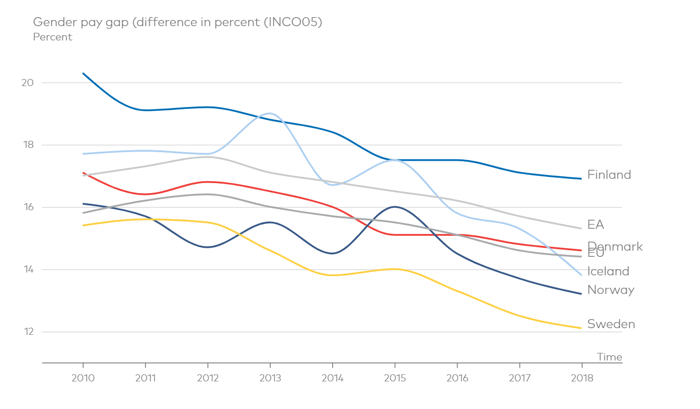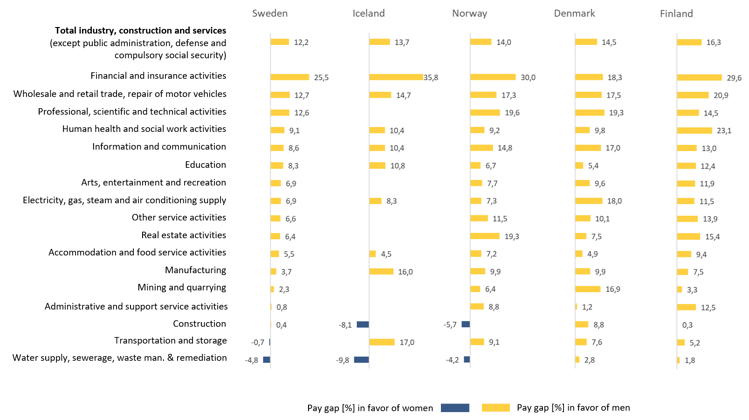The gender pay gap, existing but decreasing
The gender pay gap has decreased for all five Nordic countries since 2010. Also the average gender pay gap in the EU (28 countries) has decreased slightly during the same period. The gap is highest in Finland and lowest in Sweden. The gender pay gap has been fluctuating for Norway and Iceland during the time period shown. The work force in Iceland is smaller than in the other Nordic countries, which might explain some of the variation in the Icelandic figures.

Figure 1. Unadjusted gender pay gap. A pay gap above zero means that men on average have higher gross hourly earnings than women. Provisional data for EU28 2015 – 2018 and for Finland 2018.
Source: Nordic Statistics Database, INCO05 Gender pay gap (difference in percent) by activity, reporting country and time.
In general, men’s gross hourly earnings in the Nordic countries are higher than those of women, with a pay gap above zero for all countries and for all years. That the gap is unadjusted means that the numbers are not adjusted according to individual characteristics that may explain part of the earnings difference.
The Gender Pay Gap is often used to illustrate inequalities in labor market conditions for men and women. It shows the difference between average gross hourly earnings of male employees and of female employees as a percentage of average gross hourly earnings of male employees. A pay gap above zero implies that men on average have higher gross hourly earnings than women.
Gender pay gap highest in the finance sector
The gender pay gap varies between different sectors in the economy. When the gender pay gap is broken down into different economic activities, the average gross hourly earnings are higher for men than women for almost all economic activities in the Nordic countries.
For all Nordic countries, Financial and insurance activities is the economic activity with the largest difference between the genders in terms of unadjusted gross hourly earnings. The activities Construction and Water supply, sewage, waste management and remediation shows gender pay gaps in favor of women for at least Sweden, Norway and Iceland (for Iceland see comment in figure 2 on low reliability). It means that in these countries and for these categories, women on average have somewhat higher gross hourly earnings than men.
